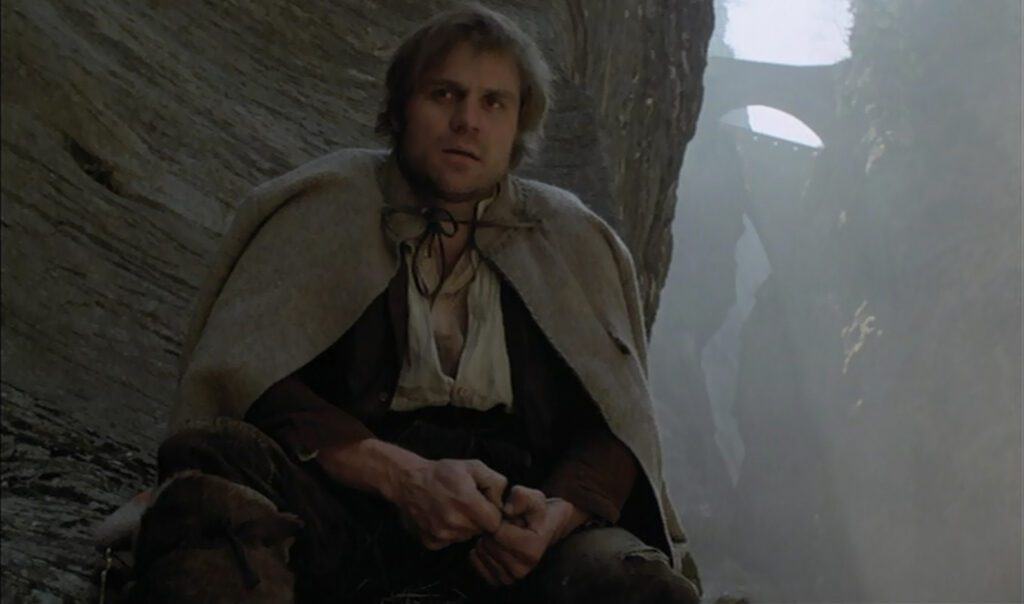
Heart of Glass
1976, directed by Werner Herzog
In late November 1974, Werner Herzog received a telephone call in Munich informing him that his friend Lotte Eisner was dying in a Paris hospital. Eisner had become a film critic in Berlin in 1927 and knew many of the filmmakers from Germany’s fertile Expressionist period. Being Jewish she fled to France in 1933, was put in a French concentration camp during the war, escaped, and went into hiding until France’s liberation. In 1969 she wrote The Haunted Screen, a book which to this day remains a popular survey of German Expressionist film.
During the silent era German cinema was innovative and internationally recognized, but when Hitler took power the Nazi propaganda regime disparaged Expressionism as “degenerate art”, and the flowering of German film came to a halt. Toward the end of The Haunted Screen, Eisner cited Werner Herzog as one of the best hopes for a renaissance of German cinematic tradition.
Eisner’s support of Herzog in his early career meant a great deal to the young director, who considered her the last link between himself and Germany’s old and nearly lost cinematic craft. He felt that the new generation of filmmakers needed her help to forge a continuity with the old masters including Friedrich Murnau and Fritz Lang. This same motivation inspired Herzog to remake Murnau’s silent vampire film Nosferatu in 1979. When he learned that Lotte Eisner was dying, he felt a conviction that if he walked from Munich to Paris she would be alive and healthy when he arrived to meet her. He set out at once, traveling three weeks on foot through cold and snow, and when he reached Paris on December 14 she was out of the hospital and lived another nine years.
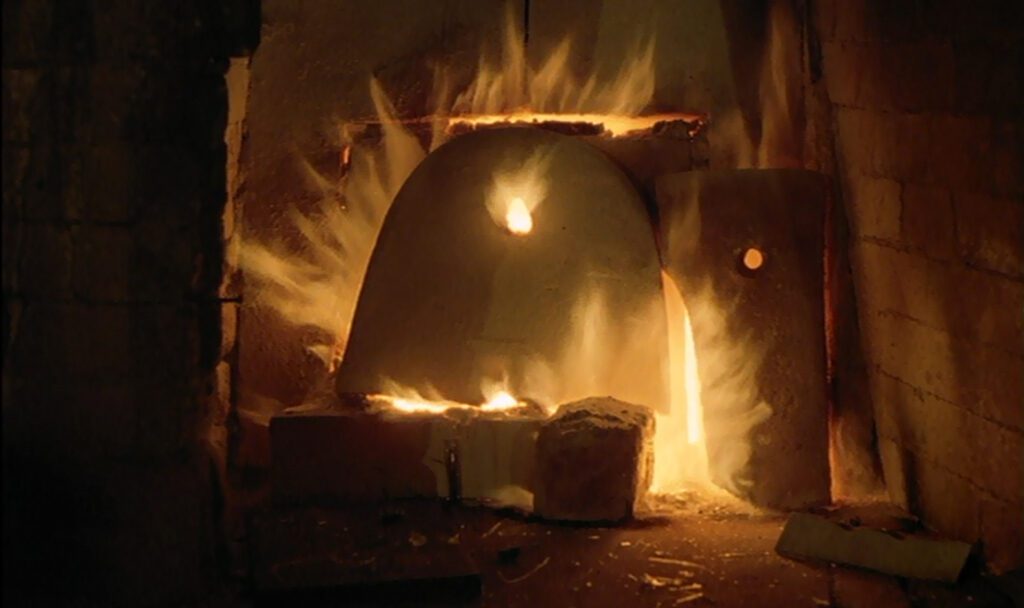
This notion of resurrecting a lost art, which was so dear to Herzog and central to the mutual admiration between him and Eisner, forms the kernel of Heart of Glass, a story of a Bavarian village trying to recapture the secret formula for ruby glass which had been its economic lifeblood.
Besides these parallels between rekindling German film and recovering the art of ruby glass, there are signs that Heart of Glass had a personal meaning for Herzog. Unlike his previous movies shot in exotic lands like Crete, the Sahara, the Canary Islands, and Peru, it takes place in a Bavarian village at the edge of the Alps like Herzog’s childhood hometown of Sachrang. Herzog makes a cameo, rare for his early films, as one of the porters carrying the ruby glass to the river. It’s tempting to think of the title as a self reference, especially if you mix the German and English: Herz + O(f) + G(lass) (Herzog is fluent in English and uses it often in his films).
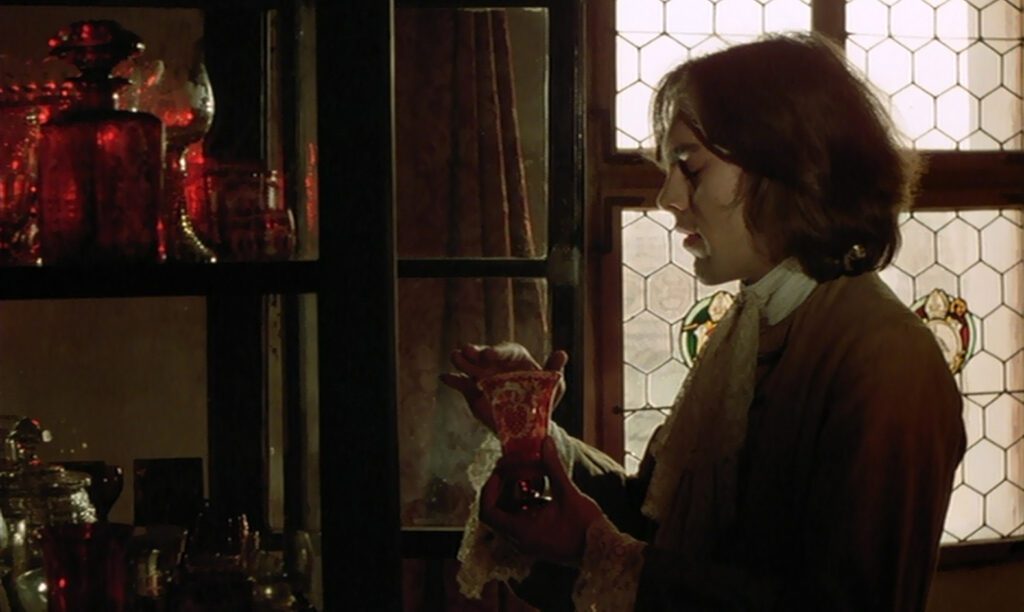
Given Herzog’s wish to reconnect with the roots of German cinema, it should be no surprise if Heart of Glass finds a cinematic touchstone in The Cabinet of Dr. Caligari, as if writing on the palimpsest of Germany’s first Expressionist film and forecasting Herzog’s homage to Nosferatu three years later. Just as Dr. Caligari carries the source of his power in a cabinet, several precious items of ruby glass – the village’s vital force – are stored in a glass cabinet. The first line spoken after the prologue is Wudy telling Ascherl “Tomorrow you’ll be dead,” which comes straight from the mouth of Cesare when he predicts Alan’s death. Other parallels to Caligari include a hurdy-gurdy, a jail cell, and Hias stabbing the air with an invisible knife while wrestling a bear, as Francis had stabbed the air when reporting Alan’s murder to the police. The sofa where the lord searches for the lost formula echoes the psychiatrist’s couch where the doctor will search for Francis’ secrets. The time and place of both Caligari and Heart of Glass are vague, both combining a medieval setting with minor hints at a more recent placement: Caligari’s book on somnambulism dates the story after 1726, and the presence of modern psychiatrists dates it much later; likewise, a few clothing styles and a line about factories place Heart of Glass closer to modern times.
All the roles in Heart of Glass, except for Hias and the professional glassblowers, were allegedly performed under hypnosis (whether Herzog performed his own cameo in a trance is not clear). The prologue goes a step further, using hypnotic techniques on the audience. Over a roaring cascade, a voice-over guides the viewer to imagine falling a great height and landing in a new world. Aided by a transparent canvas superimposed over the picture, the voice directs the viewer to focus on a fixed point in the waterfall, and ethereal music adds to the hypnotic aura. Whether this has ever put anyone into a genuine trance is not widely known, but many hypnotists believe that even normal states of awareness fall on a spectrum of hypnotic experience… and if that’s the case then this scene doubtless achieves its goal in many viewers.
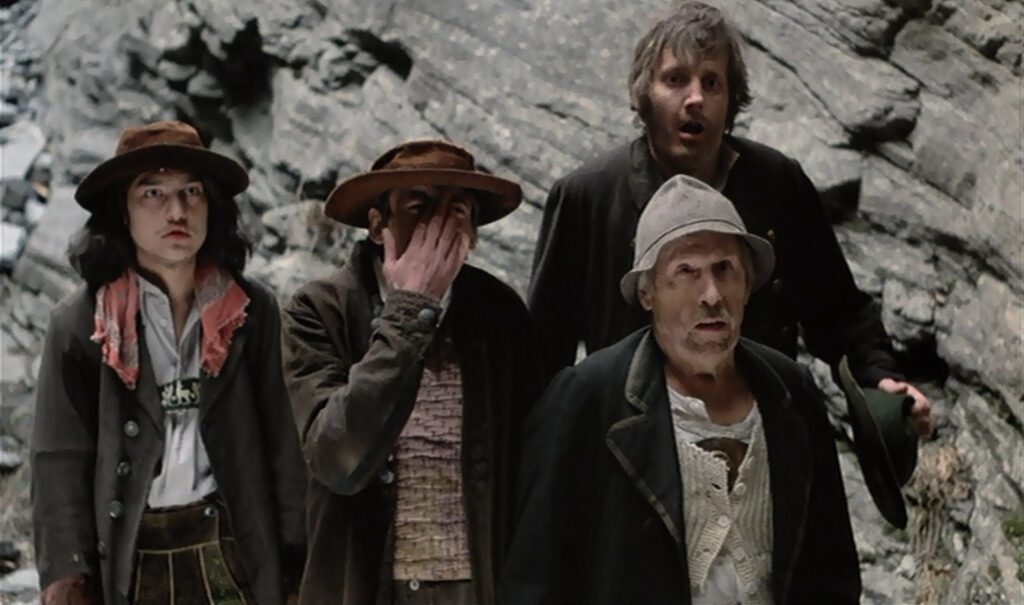
Heart of Glass is divided into two main parts framed by a prologue, an interlude, and a coda. The three short framing parts are composed of landscapes filmed in Alaska, Yellowstone, the Alps, and the Skellig Islands at the southwest corner of Ireland. The two long narrative sections take place in the Alpine village where the master glassmaker has recently died, taking the secret formula for ruby glass to his grave. Left at a loss, the townsfolk and local baron try desperate and superstitious measures to recapture the lost formula. Meanwhile a shepherd prophet named Hias comes down from the mountains preaching apocalyptic visions.
In the prologue, a group of mountain peasants quakes at rumors of a giant in their land. Hias calms them, assuring them that the giant is merely “the shadow cast by a dwarf”. Hias then warns of “a liar and a thief”, whereupon two cloaked figures cross the twin bridges above the ravine, illustrating his prophecy. The liar and the thief are fitting descriptions for the two men who dominated Germany, or part of it, in succession during the supposedly fallow decades of German cinema from the end of Expressionism to Herzog’s time – first Hitler, the liar who hypnotized and deceived the nation until 1945, then Stalin, the thief who stole and isolated Germany’s eastern third. Each of these tyrants is of course a small man, magnified in importance by his subjects’ fear like a dwarf casting the shadow of a giant. Hias cautions the peasants to be on guard against yielding power to tyrants by aggrandizing them.
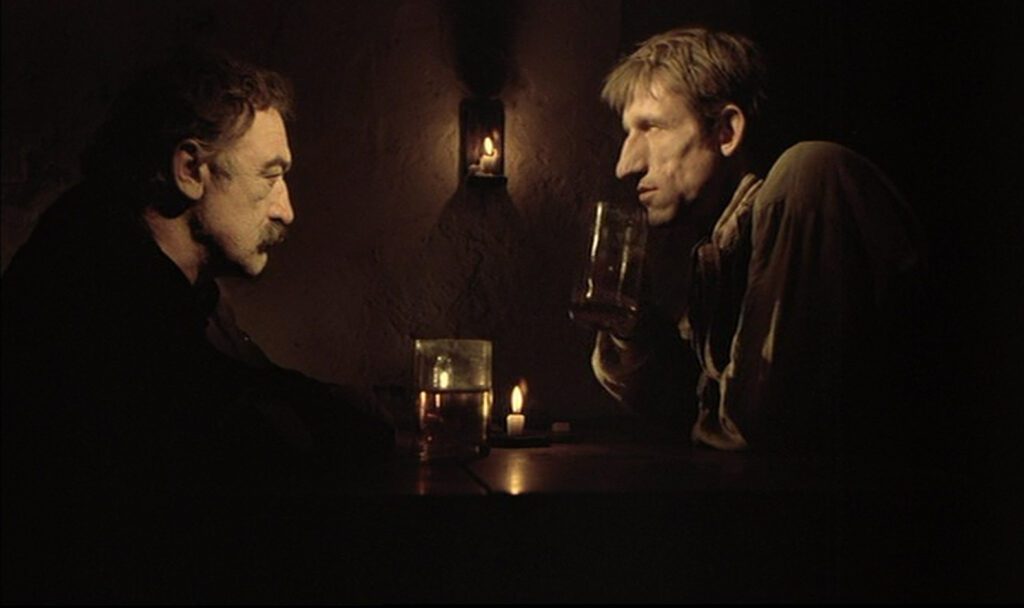
The five parts of Heart of Glass follow the template of mid-20th century German history. In the prologue the land is enshrouded in mist and people live in fear, like at the dawn of fascism. The first narrative section corresponds to the Nazis’ reign, beginning with senseless aggression over a glass of beer, as Hitler’s rise hinged on the 1923 Beer Hall Putsch. The old man sitting in an armchair for 12 years is like the Prussian aristocracy, the former lords of Germany, sitting immobile through the twelve years of the Third Reich. The hypnotized cast illustrates a nation of somnambulists, living in a daze and predicting the end of the world but doing nothing to avert it.
The middle passage is a kind of intermission evoking the wreckage of World War II, with desolate ruins and a volcanic hot spring with dead trees. After this interlude, the second narrative section returns to the village of the ruby glass, but instead of allusions to war and fascism, the imagery now evokes Germany’s reconstruction. Workers labor together in the glass factory, and Hias wrestles with a bear, the symbol of Russia. The young aristocrat searches for the lost formula in the sofa’s stuffing, a diversion reminiscent of the abstract theorizing typical of Marxists and capitalists alike in postwar years.
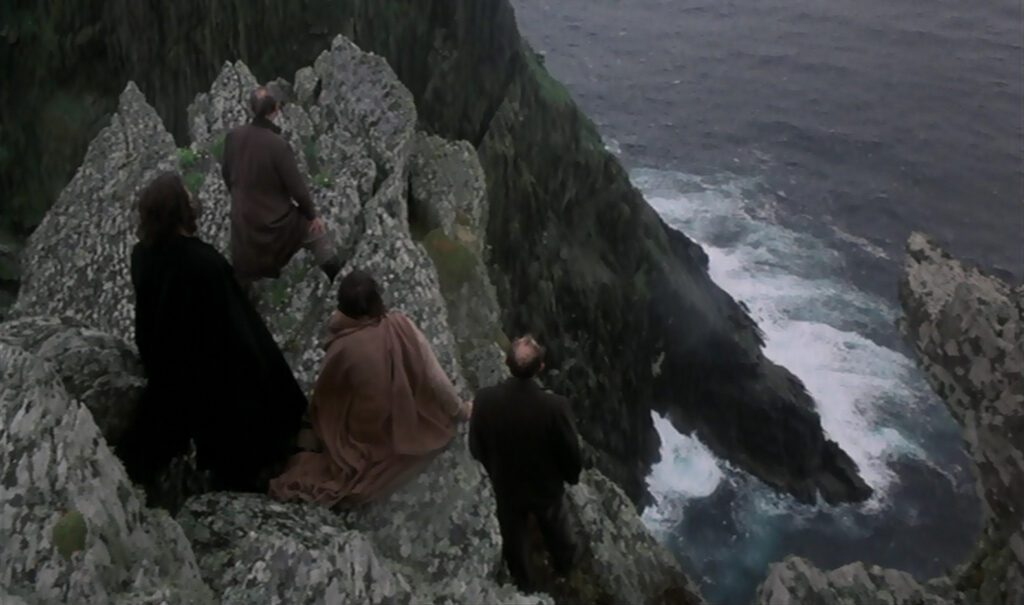
Finally the last section, the coda on the rocky islands, speaks to the future. The men who had gazed for years at the horizon and now bravely row off to pursue it are like modern German filmmakers audaciously attempting to revive a dead art. Like artists encouraged by a daring audience, the boaters take it as a sign of hope that a flock of gulls accompanies them out to sea.
CONNECTIONS:
The Cabinet of Dr. Caligari – Sleepwalkers; valuable person or objects stored in a cabinet; prediction of death by morning; hurdy-gurdy; jail cell; invisible knife; sofa
Veronika Voss – Allusions to Caligari; power stored in a cabinet